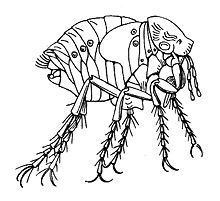Order Siphonaptera Superfamily Pulicoidea Higher classification Pulicoidea | Infraorder Pulicomorpha Scientific name Hectopsyllidae Rank Family | |
 | ||
Similar Flea, Insect, Tunga, Pulicidae, Hystrichopsyllidae | ||
Hectopsyllidae is a small family of fleas, containing only the chigoe flea Tunga penetrans and the sticktight flea Echidnophaga gallinacea. They were formerly known as Tungidae, and by authorities that demote the Pulicoidea to family rank they are treated as subfamily Hectopsyllinae (formerly Tunginae). Only 2 genera with some handfuls of species are placed here nowadays, making further subdivision of the family unnecessary.
These fleas usually parasitize terrestrial mammals, and in a few cases birds and bats. The females are by and large immobile and will remain attached to the same place for prolonged periods of time, possibly until they die. Hectopsylla narium was found to live inside the nostrils of the burrowing parrot (Cyanoliseus patagonus patagonus).
The closest living relatives of the Hectopsyllidae are the common fleas, Pulicidae. The Hectopsyllidae differ from these by the following characteristics:
In addition, they have reduced setae on the antennal flagellum, but this may be an adaptation bearing little phylogenetic information.
